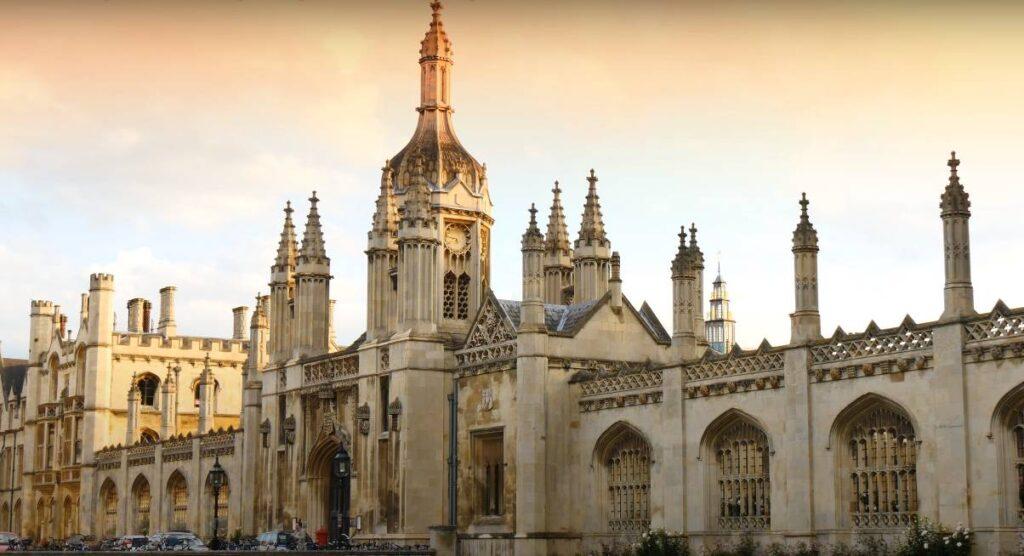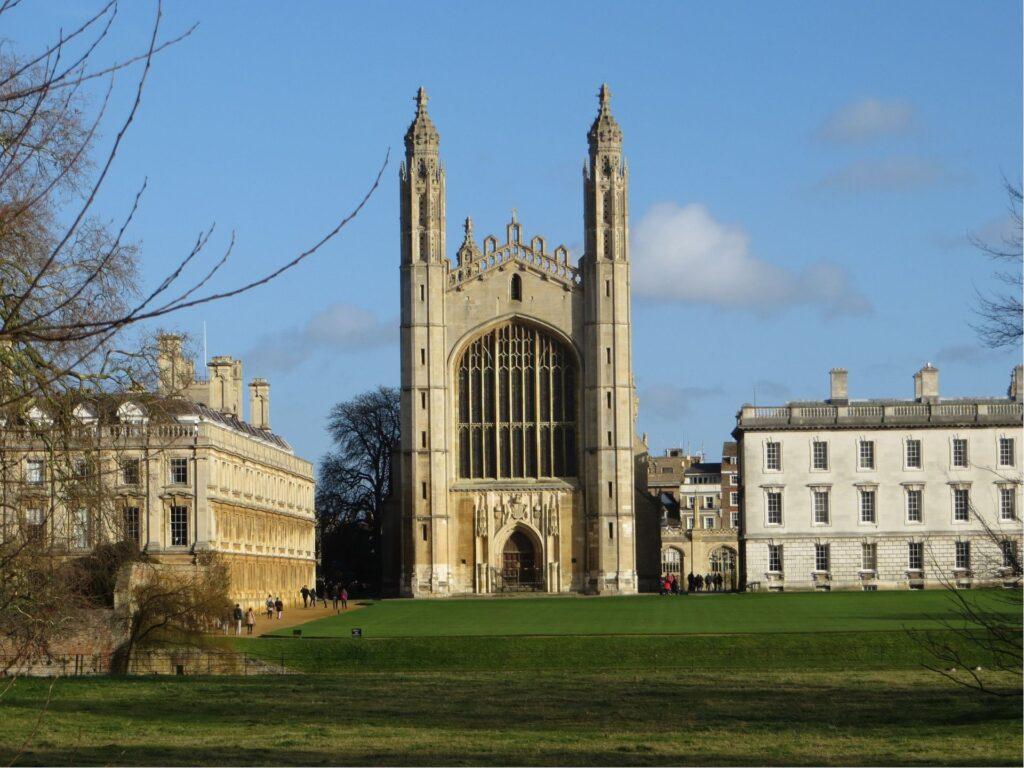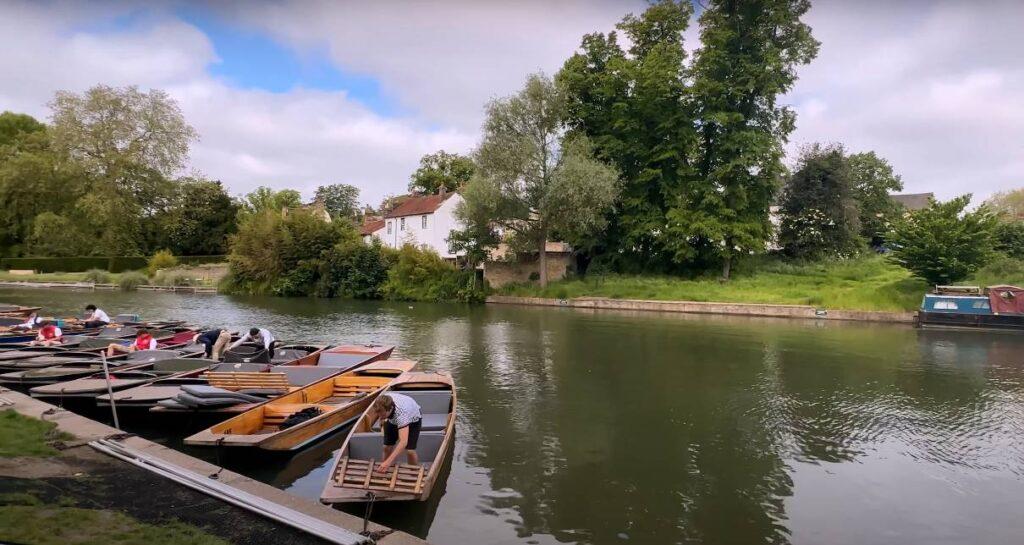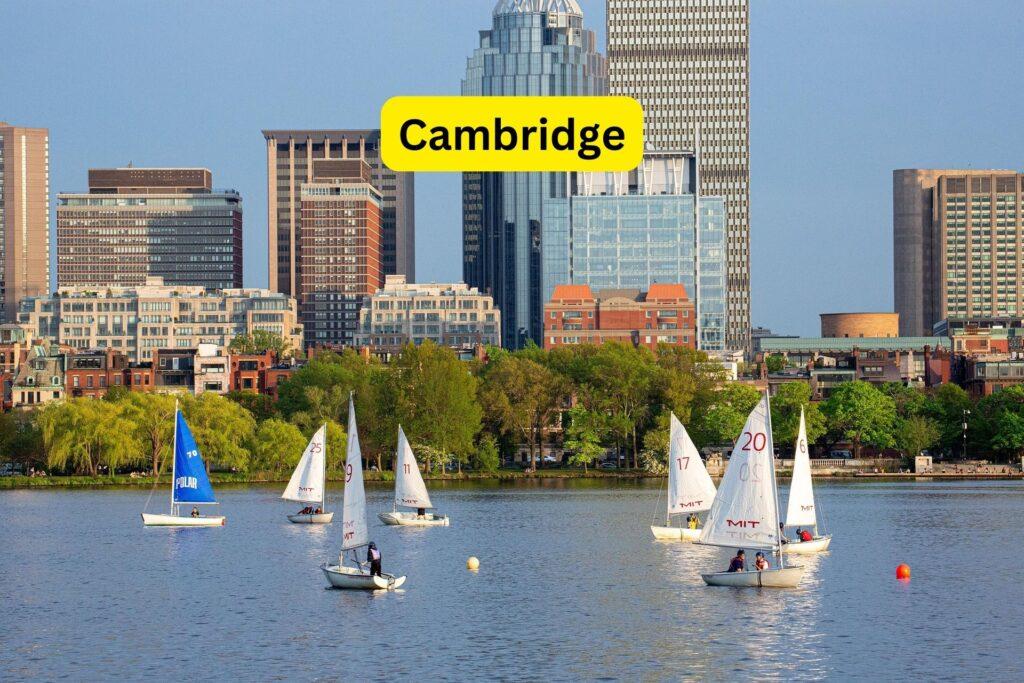Cambridge is a city in eastern England, about 80 kilometers north of London. It is best known for being the home of the University of Cambridge, one of the oldest and most prestigious universities in the world. But Cambridge is more than just a university town. It is also a place of rich history, stunning architecture, and vibrant culture. Whether you are interested in learning, exploring, or relaxing, Cambridge has something for everyone.
We will present a guide to three of the most popular features and attractions of Cambridge: the University of Cambridge, King’s College Chapel, and Punting on the River Cam. We will provide some background information, some facts and figures, and some tips and advice on how to make the most of your visit to this fascinating and enjoyable place.
The University of Cambridge
Since its foundation in 1209 by a group of scholars who left Oxford after a dispute with the local townspeople, the University of Cambridge has been a leading institution of higher education with a global reputation for quality and achievement. Since then, it has grown to become a global center of excellence in teaching and research, attracting students and academics from all over the world.

The University of Cambridge is composed of 31 colleges and six schools. Each college is an independent institution with its buildings, staff, students, and traditions. Some of the most famous colleges include Trinity College, King’s College, St John’s College, and Magdalene College. The schools are the academic divisions that organize the faculties and departments. The six schools that form the university are Arts and Humanities, Biological Sciences, Clinical Medicine, Humanities and Social Sciences, Physical Sciences, and Technology.
Academic Achievements and Contributions of The University of Cambridge:
The University of Cambridge is renowned for its academic achievements and contributions to various fields of knowledge.
It has produced many notable alumni, academics, and affiliates, such as Isaac Newton, Charles Darwin, Stephen Hawking, Alan Turing, Rosalind Franklin, James Watson, Francis Crick, John Maynard Keynes, Bertrand Russell, Alfred Lord Tennyson, Virginia Woolf, Salman Rushdie, Emma Thompson, Sacha Baron Cohen, and many more.
It has also won 121 Nobel prizes (more than any other institution in the world), as well as many other awards and honors.
Attractions:
The University of Cambridge has many cultural and scientific museums, libraries, gardens, and events that are open to the public.
Some of the most popular ones include the Fitzwilliam Museum (the art museum), the Museum of Archaeology and Anthropology (the anthropology museum), the Sedgwick Museum of Earth Sciences (the geology museum), the Whipple Museum of the History of Science (the science museum), the Cambridge University Library (the main library), the Botanic Garden (the botanical garden), and the Cambridge Science Festival (the annual science festival).
King’s College Chapel: Cambridge
A symbol of Cambridge, King’s College Chapel is a magnificent building that showcases the beauty of late Perpendicular Gothic English architecture. It is part of King’s College, which was founded in 1441 by King Henry VI. The chapel was built between 1446 and 1515 by successive kings of England.

Features of King’s College Chapel:
King’s College Chapel has many distinctive features that make it a masterpiece of art and engineering. Some of these features are:
- The fan vault: The ceiling of the chapel is decorated with intricate patterns of stone ribs that form a fan-like shape. It is the largest fan vault in the world and one of the most impressive examples of medieval craftsmanship.
- The stained glass windows: The chapel has 12 large windows on each side that depict scenes from the Old and New Testaments. They are among the finest medieval stained glass windows in Europe and have survived remarkably well over time.
- The rood screen: The screen that separates the nave from the choir is carved with elaborate figures of saints and angels. It was originally commissioned by King Henry VIII as a gift for his first wife Catherine of Aragon.
- The organ: The organ that stands on top of the rood screen is one of the oldest and most famous organs in England. It was built in 1605 by Thomas Dallam and has been modified several times over the centuries.
King’s College Chapel is not only a historical monument but also an active house of worship and home of the King’s College Choir. The choir is composed of 16 boy choristers and 14 male undergraduates who sing daily services in the chapel. The choir is famous for its Christmas Eve service called A Festival of Nine Lessons and Carols, which has been broadcast worldwide every year since 1928.
King’s College Chapel is also a landmark and a symbol of Cambridge. It hosts many events and ceremonies throughout the year, such as concerts, lectures, graduations, weddings, and royal visits. It is also a popular tourist attraction, attracting thousands of visitors every year who admire its beauty and history.
Punting on the River Cam: Cambridge
Punting is a traditional activity in Cambridge that involves using a long wooden pole to push along a flat-bottomed boat called a punt. It originated in the 19th century as a way of transporting goods and passengers on the shallow and narrow rivers of England. Punting in Cambridge evolved into a leisure activity in the 20th century, especially among students and tourists.
It offers a unique way to enjoy the sights of Cambridge, especially the colleges along the river known as the Backs. The Backs are a stretch of land that runs behind some of the most famous colleges, such as King’s College, Clare College, Trinity College, St John’s College, and Trinity Hall. The Backs are dotted with some of the most famous landmarks of Cambridge, such as the Mathematical Bridge, the Bridge of Sighs, and the Wren Library.

About Punting:
It can be done either by oneself or by hiring a chauffeur who can also provide a commentary on the history and culture of Cambridge. Punting by oneself requires some skill and practice, as well as a sense of balance and direction. Punting by a chauffeur is more relaxing and informative, but also more expensive. It can be done all year round, but the best time is in spring and summer when the weather is warm and the river is calm.
It is not only fun but also beneficial for health and well-being. Punting can improve physical fitness, mental alertness, and social skills. Punting can also reduce stress, enhance mood, and increase creativity.
Cambridge is a fascinating and enjoyable place to visit and explore. It has a rich history, stunning architecture, and a vibrant culture. It has something for everyone, whether you are interested in learning, exploring, or relaxing. We have presented a guide to three of the most popular features and attractions of Cambridge: the University of Cambridge, King’s College Chapel, and punting on the River Cam. We have provided some background information, some facts and figures, and some tips and advice on how to make the most of your visit to this fascinating and enjoyable place.
Also, Discover: Tintagel Castle, Cornwall: What to Know Before You Visit the Legendary Site





